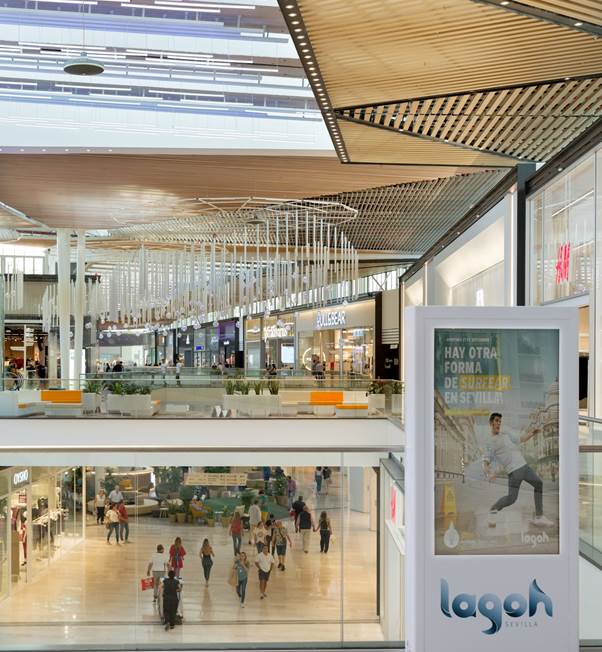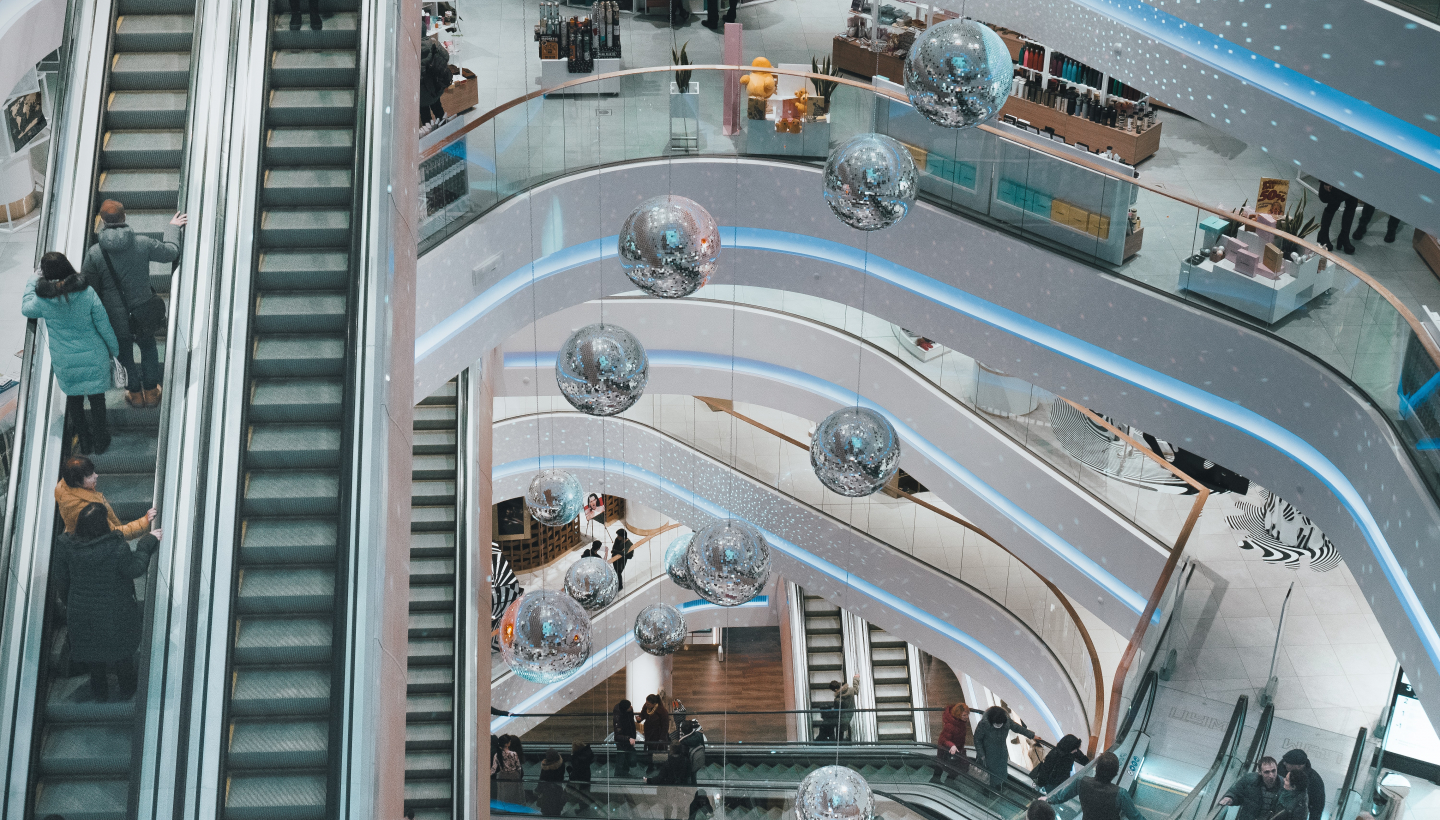By Patricia R. Guevara
Originally Published by MIT Technology Review in Spanish
The CEO of Grupo Lar, Miguel Pereda, addresses the challenges of the real estate sector with an eye on the future of shopping centers and the digitalization necessary to reinvent them
The story of Grupo Lar Iberia’s CEO Miguel Pereda, is a family history of reinvention. Pereda is now at the forefront of the Iberian activities of the real estate company founded by his father, working on real estate investment, promotion and management in assets such as shopping centers, residences and offices.
In this sector, reaching digital transformation first is key, but the frantic pace of digitalization and markets does not usually leave much time for listening and reflection. Therefore, Pereda recalls the importance of "always questioning everything, exploiting the ability to observe and the motivation to improve on what you did yesterday." We talked with him about how to approach the future of the real estate sector with curiosity and good sense.
What obstacles does the real estate sector face in digitalization?
Nuestro gran condicionante es que, como la propia palabra dice, hacemos actuaciones inmobiliarias, que van a durar muchos años. Además, venimos del mundo de la integración vertical: un empresario inmobiliario compraba el suelo, el arquitecto hacía el proyecto, luego intervenía una constructora, se contrataba a los vendedores y se comercializaba.
Our challenge is that real estate transactions will last for many years. In addition, we come from the world of vertical integration: a real estate entrepreneur bought the land, the architect made the project, then a construction company intervened, the vendors were hired and marketed.
But the industry is evolving: now we have an absolute disintegration and division between capital, real estate and services. In part, this allows things that were previously impossible: in each of the segments you can incorporate, copy or adapt the best elements of innovation that occur the respective industry or innovations in other related industries.
"The big challenge is to be able to read the transformation, what the client wants and why he will choose you over someone else"
And challenges regarding shopping centers?
There are several factors: e-commerce, different generations that demand different things and behave in different ways, the constant waves of technology ... How can you continually adapt something as big and physical as a shopping center to something else that you still don't know? The big challenge is to be able to read the transformation that is taking place, what the client wants and why he will choose you over the competition.
In your your company’s case, they have been managing and investing in real estate for 50 years. How do you start talking about innovating in such an established company?
First you have to be clear that innovation has a technological leg, but there is another that is not. We begin to reinvent ourselves in the structuring of operations, changing processes and business models. It is about having an innovative spirit and desire to do different things. It is true that innovation must be addressed because you need it to grow and survive, but also because you have fun. In that sense, we have always been curious about the technological part, and we have incorporated it into the improvement of our business and our products.
"Sometimes you confuse the essential with the details and you lose focus on what’s important. Don't get stuck: focus on the relevant issues"
How have they done it?
First we created a multidisciplinary digital committee, and we incorporated innovations linked to technology in different phases, especially in processes, services and products. We wanted the entire organization to have a forum to propose ideas and then see how to develop them, however this has fallen short. In the end, a bottleneck can be the worst enemy of innovation, because innovation must flow at all levels and be autonomous in its implementation.
Now we are launching an innovation office and we also take innovation it into account when hiring our team. We do not necessarily look for profiles with technological knowledge, but sensibilities and performance in innovation is a valued attribute.

What is the CEO's role in this transformation?
You have to constantly consider what the next phase is and what your role in it will be. Our skills change over time, we have to adapt and see what is the maximum value we can bring and what are our limitations. "Sometimes you confuse the essential with the details and you lose focus on what’s important. Don't get stuck: focus on the relevant issues"
Risk aversion also changes over time. It is easy to be risky when you have nothing to lose, but in a company of this size it is much more complicated and the biggest limitations are those you put on yourself. But the years give you experience to see how you would have done things differently and you learn for the future. The people who are able to think big and reinvent themselves are the people who manage to improve their results.
"Customers demand above all good feelings and experiences. Now you don't fight so much for the customer to buy, but for him to come"
If we talk about that technological leg, how is Grupo Lar integrating, for example, artificial intelligence and artificial intelligence conversational assistants, one of the 10 technologies that can change the world according to MIT Technology Review?
We are testing a chatbot built on a foundation of artificial intelligence that can give the client updated information at all times. We are implementing technology in the management processes. We are also starting to implement facial recognition and geolocation systems to see who comes, when and how many times they repeat, where they live, how much they earn ... But always respecting individual privacy. The goal is always to better understand customers in order to offer them what they need.
¿How is the client changing that client that is increasingly digital?
The customer starts to get fed up with so many targeted offers, like if you are a parent and only children’s products are sent to you. Sometimes it is not so easy to know what you want within a broader spectrum of options. In addition, customers demand above all good feelings and experiences. Now you don't fight so much for the customer to buy, but for him to come.
So how do you envision the mall of the future?
There are things that we have already begun to advance, although they are very poorly implemented, like intelligent and virtual reality pilots. As for retail, the current trend is toward more attractive stores with less stock that are more spacious and have huge windows. On the other hand, food stores are smaller, because we no longer want to buy everything on the same place and we are looking for more exclusivity. The cinemas are bigger, more comfortable and with more rooms to choose different movies. In general, we want to go to attractive places with lots of offer, including services and experiences.
We don’t believe that shopping centers are going to become extinct. People will continue to leave home, they may not buy much, but they will have a good time, eat a hamburger and even select something they will buy online. Likewise, we now have coworking fever and flexible working at home but that does not mean that the offices will disappear. Indeed, there will be people who work in this way, but a reasonable amount of people will continue going somewhere to work; What will have to be invented is where. We must wait for a change, but without being alarmed: the sector will not disappear.



